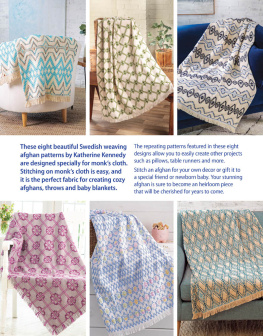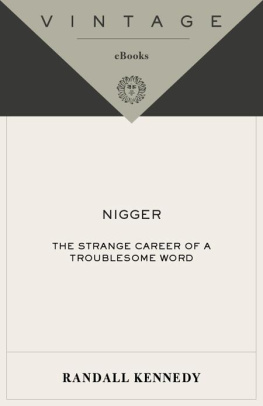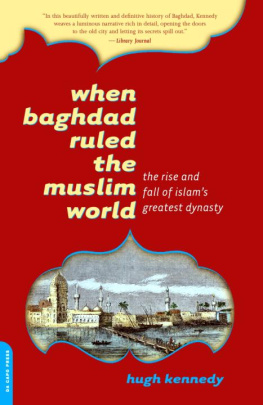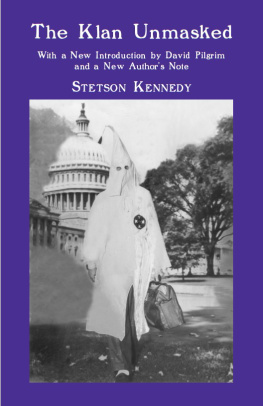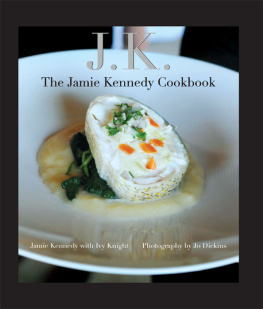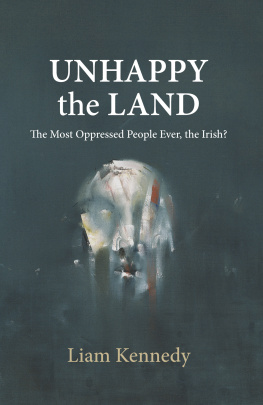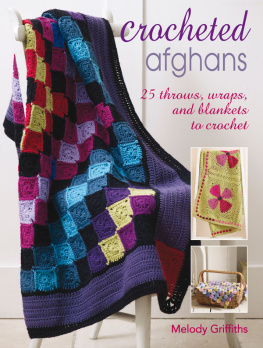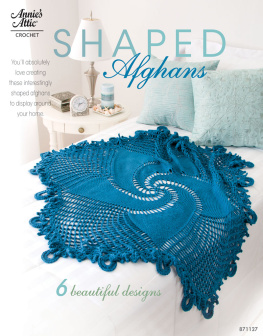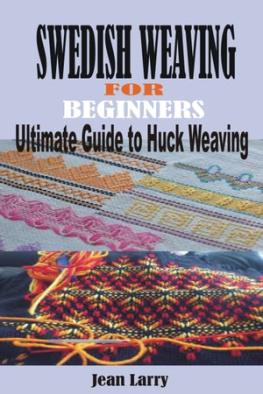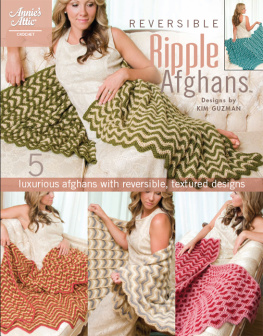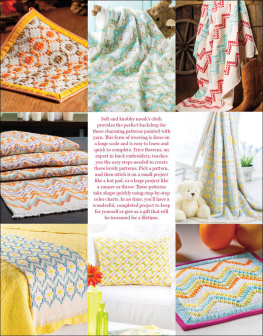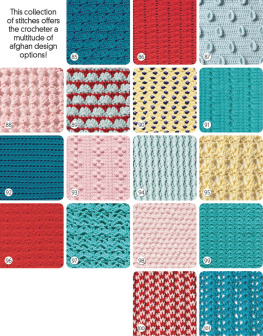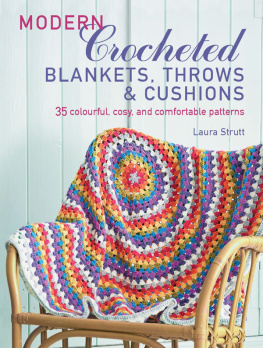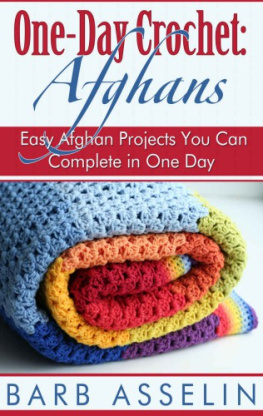Table of Contents
Guide
Pages
If you are an Annies customer and have a question about the instructions on a pattern you have purchased, please visit:
http://www.anniescatalog.com/pages/customer_care/pattern_services.html
Introduction
Traditional Swedish weaving, also known as huck weaving or huck embroidery, became popular in the 1930s and 40s when crafters started using embroidery floss to decorate or enhance their white linens, particularly their huck towels.
This wonderful, almost lost, needlework art form is experiencing a resurgence in popularity, and one of the most popular uses for this needlework style is with making afghans using monks cloth. Monks cloth is easy to work with, and Ive found that the more its washed, the softer it gets, making this the perfect fabric for creating cozy afghans, throws or baby blankets. Any of the afghan designs in this book are suitable for everyone from the beginner to the more experienced stitcher.
Its good to note that while you may prefer to make afghans using these designs, they can also be used to make any number of other projects like pillows, table runners or even towels. Just use as much of the design as you want to create the look youre going for.
It was a pleasure creating these new designs, and I hope you have as much fun with them as I did. Happy weaving!
Katherine Kennedy
Meet the Designer

Katherine Kennedy is passionate about Swedish weaving and has been stitching for over 15 years. With her other passion being creativity, it seemed only natural for her to create her own designs, which she has been doing from the beginning. Once she discovered Swedish weaving, she wanted to share it with others, so she started teaching. It was her students who really encouraged her to look into publishing her design patterns. Just over a year after discovering Swedish weaving, her first book Easy-Does-It Swedish Weave Towels was published. Since then, she has developed a full line of chart packs and kits that are distributed worldwide and has designed two more books and a video. This is her third book published by Annies.
Katherine has been inspired by some of the old pattern books from the 1930s and 40s. All of her designs are original with a contemporary flair, but she also tries to maintain a more traditional look when creating a design. She and her husband, Mark, live in Minnesota. They have six children and three grandchildren, whom they love spending time with. To see more of Katherines patterns, visit www.AnniesCraftStore.com and the website www.swedishweavedesigns.com.
Table of Contents
The colorful patterns of Swedish weaving, or huck embroidery as it is also called, are created by weaving colored strands of yarn under the vertical raised threads occurring at regular intervals on the fabric surface, similar to a darning stitch. In Swedish weaving and huck embroidery, these vertical threads are called floats.

Fabrics
Monks cloth (Photo 2) is a heavy fabric originally made from worsted wool and used for monks habits. Really! Linen monks cloth is still used for monks habits or as a base for rug hooking. But the 100 percent cotton variety is a 4 thread 4 thread, 7-count basket weave available in many colors. It is used in Swedish weaving for afghans.

It is important to prewash monks cloth because it can shrink up to 15 percent. Always zigzag stitch, serge or bind the cut edges prior to washing to prevent fraying. This fabric will soften with each wash, which is another feature that makes it great for afghans.
Yarn
Worsted- and sport-weight yarns work well on monks cloth, because they match the weight of the fabric. Fingering-weight yarns are usually too fine and get lost in the heavier monks cloth threads. Be sure to choose a yarn that will not shrink. Design density determines how much yarn is needed on the larger monks cloth projects. Most designs will use one to two skeins of yarn to make a lap blanket.
Needles
A bodkin (Photo 3) is a flat needle, either with or without a bent tip, with a large eye used exclusively for stitching on monks cloth. The eye is large enough to accept yarns. Another needle that works well on monks cloth is a Susan Bates 5-inch steel weaving needle. It is similar in size to the size 13 tapestry needle. Because of its length, you can make quick work of a row of stitching, especially when doing a significant number of straight stitches.
A size 13 tapestry needle, either straight tip or bent tip, is another option. For finishing edges with the Nun stitch or other hand-finishing method, the size 20 tapestry needle works well.
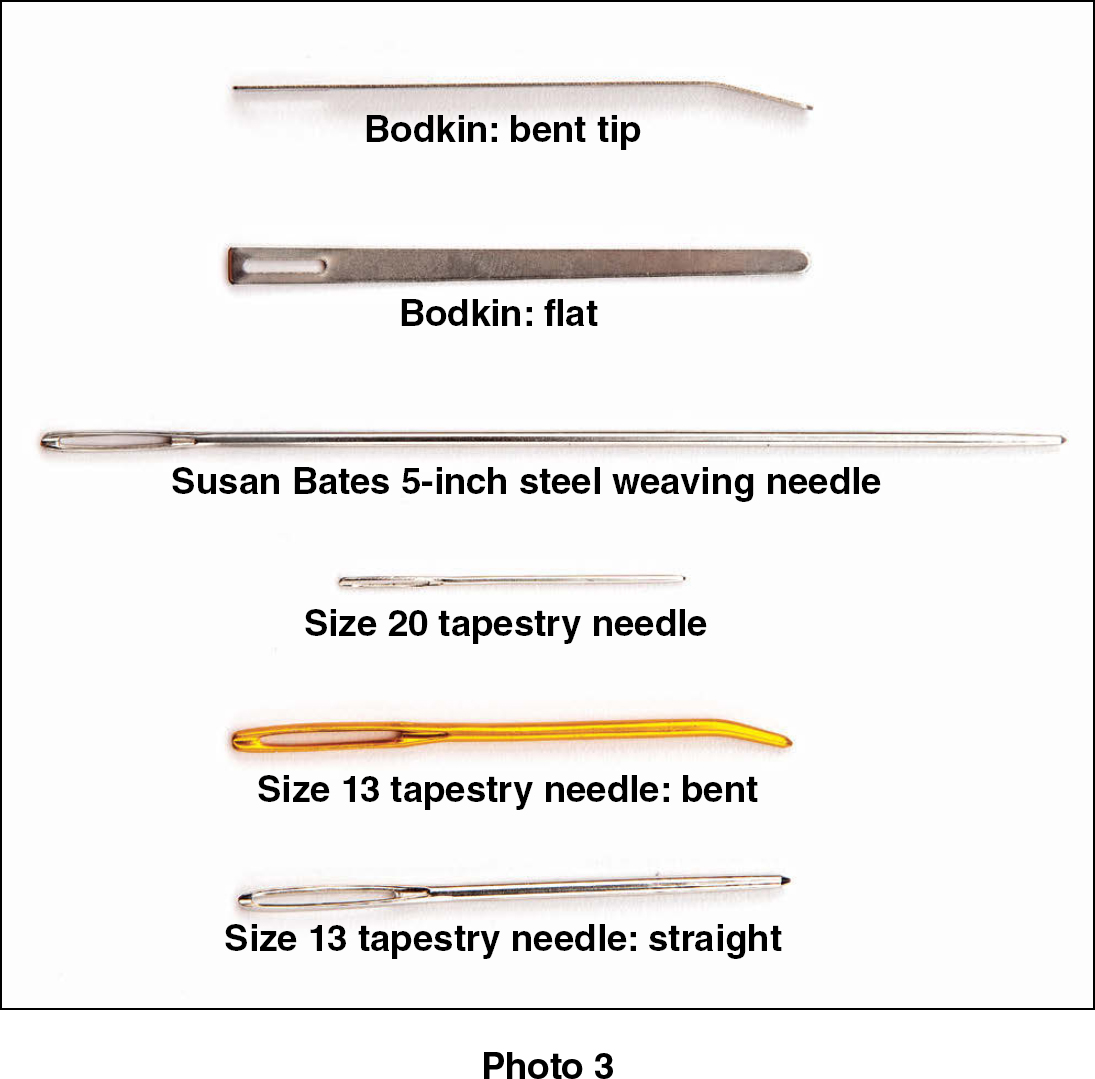
General Tools
Stitchers have found a number of general tools that work well for Swedish weaving.
Position a throw pillow on your lap under your project. The pillow raises the project up several inches and holds it in place, providing a relaxing stitching platform.
Any needlecraft requires good lighting. Good lighting increases contrast, which will help with finding the floats on the fabric. It reduces glare, which helps to reduce eye strain and headaches and helps you work longer. A low heat bulb or lamp is more comfortable to work under for long periods of time. There are daylight bulbs you can use in your regular lamp, or there are lamps manufactured specifically for needlework, some complete with a magnifying glass!
For trimming yarn, fringe or projects to size, the best tools are a rotary cutter and mat and a clear ruler. Cutting mats come in a wide range of sizes. Choose a size that handles the sizes of projects you normally do.
Use fabric marking tools whose marks can be easily removed from your project. The best choices for marking on monks cloth are pens that are air and water removable. Remember that the air erase pens are only visible for a short time.
Weaving Designs
You will need the following basic sewing supplies and equipment to complete the projects in this book:
Sewing machine in good working order
General-purpose thread in appropriate colors
Straight pins, safety pins and pincushion
Seam ripper
Measuring tools
Iron, ironing board and pressing cloths
Scissors
Serger (optional)
Each pattern will have a materials list that will indicate the suggested amount of monks cloth and yarn needed to complete the project.
Individual project instructions will indicate how many lengths of yarn are needed to complete each row of a pattern. A length of yarn is a piece of yarn equal to one width of your fabric (Figure 1). For example, if a pattern indicates two lengths of yarn for a row, cut a piece of yarn two times the width of the fabric piece being used.


